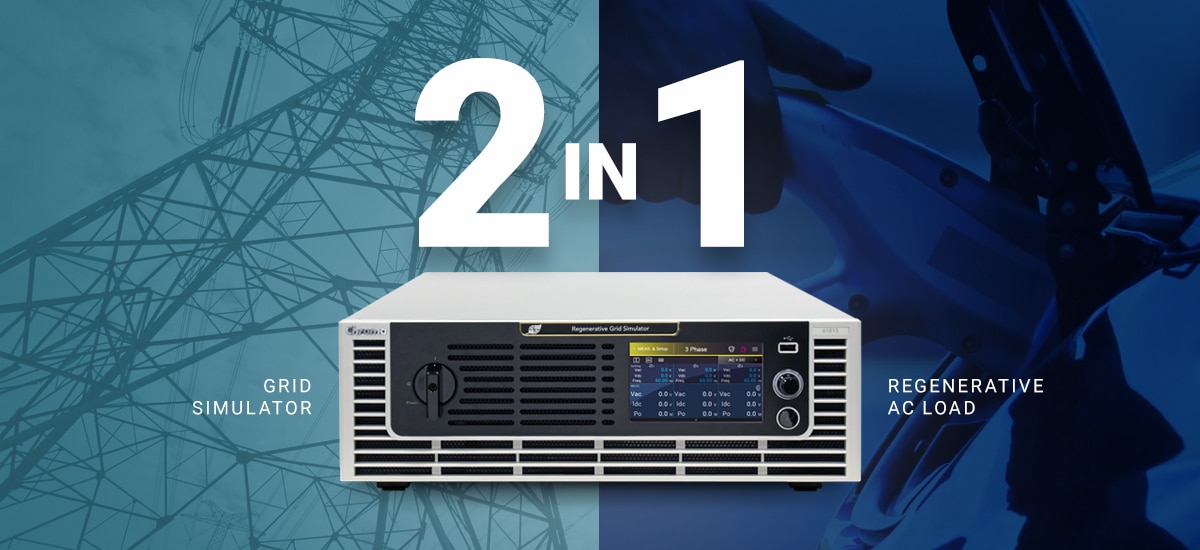Countries around the world address the continuing energy problems in a variety of ways, from stimulating technological developments to pledges to achieve carbon neutrality and progress towards complete renewable energy. Products developed in support of these trends offer bidirectional power supply that connects with the grid. For instance, a bidirectional on-board charger (BOBC) for electric vehicles can both feed energy back into the grid through vehicle to grid (V2G) technology as well as use vehicle to load (V2L) technology to supply power. To illustrate, a European company has introduced an electric vehicle that works with a renewable energy system for the home. The V2G function realizes highly efficient energy use and enables monthly feedback of up to 20 euros worth of electricity to the grid. The V2L function facilitates the use of electricity outdoors by utilizing the electric vehicle as a large mobile power source, adding extra value to the vehicle.
The V2G testing of bidirectional power products requires a regenerative grid simulator that can simulate the characteristics of the power grid and serves to test the charge and discharge performance of the output terminal. The V2L part, on the other hand, requires an AC load that must simulate various impedance characteristics to test the products’ loading effect. Now, Chroma 61815/61812/61809 Regenerative Grid Simulators with 3U/15kVA high-power density are equipped with a new AC load option. Users can complete all test items that need AC power and/or AC load on just one instrument, and easily switch between the modes. The 2-in-1 devices achieve simple and efficient bidirectional electrical characteristics testing without needing to change the terminal configuration of the DUT during the test process.

▲Chroma 61815/61812/61809 2-in-1 AC Power Supply and Load for Dual Application
The regenerative AC load mode on Chroma 61815/61812/61809 models has outstanding hardware capabilities, such as both single-phase and three-phase output modes, and up to 45kVA AC load capacity in parallel. Basic load functions include constant current, constant power, and constant impedance modes. Additionally, it also allows operation in Rectified and Lead/Lag modes that can set the crest factor (CF) or the lead /lag angles of the loading current to simulate the characteristics of rectified, capacitive, and inductive loads. Chroma Regenerative Grid Simulators offer users a more complete AC load solution.

▲Chroma 61815 Regenerative AC Load Rectified and Lead/Lag Operation Modes
Energy Conscious
Traditional AC loads contain components that dissipate the energy. By feeding the consumed test power back to the grid, Chroma 61815/61812/61809 Regenerative Grid Simulators effectively reduce the waste heat, achieving about 90% energy recycling. Especially users with high-power test applications can save greatly on their electricity bills while also reducing the carbon footprint. The regenerative function applies to testing of common AC output products, such as inverters, UPS, BOBC, etc.
For more details on these and other products, please view the video below or visit Chroma’s website. Feel free to ask us any questions you may have. We are happy to be of service.
